- Exhibition Poster (3.13MB in PDF format)
- Hand List (173K in PDF format)
-
RETROSPECTIVE: Introduction
Special Collections is a rich source of information, supporting the research needs of staff and students of the University of Otago. Comprising the de Beer Collection, Brasch Collection, Shoults Collection, Post-1800 Stack Collection, Hogg Collection, McGlashan Collection, Mellor Collection, and Pulp Fiction Collection, it is both the main and supplementary source of material for 4 exhibitions every year. Retrospective: A look back at the last 21 Special Collections exhibitions is an 'exhibition of exhibitions', revisiting those held since 2002. Retrospective represents 6 years of exhibitions and highlights the wonderful range of material held in Special Collections. While most of the exhibitions were curated by the Special Collections Librarian, some had guest curators. Many exhibitions have stood alone, some have coincided with symposiums and community events, and at least one has travelled - all have been digitized and are available. The saying 'it takes a village to raise a child' is true for creating Special Collections exhibitions – many people are involved including individuals from Special Collections, Reference Department, Custodians, Bindery, Library Administration, Marketing and Communications, and the Web Office. With their continued involvement, the next 21 exhibitions will be, without a doubt, every bit as interesting, engaging, and visually spectacular as the last.
-
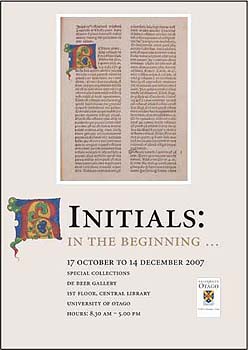
Online exhibition
Upon completing his medical apprenticeship, William Cowper (1666-1709), a surgeon, anatomist and skilled draughtsman, began to study the muscles of the human body in depth. Cowper published Myotomia Reformata in 1694. With assistance from physician Richard Mead (1673-1754) and engraver Michael Vandergucht (1660-1725), he published a second edition of Myotomia Reformata in 1724. Cowper designed historiated copperplate initials to feature at the beginning of the Preface, Introduction and the 36 chapters for the second edition. The initials A, C, E, F, G, I, S, T - some of which had several versions made - measure 59mm square (Mark A. Sanders). On display is a selection of initials found in Myotomia Reformata (1724). The scene depicted in each initial relates to the content of the chapter, or section of text, it appears at the beginning of.
William Cowper, Myotomia Reformata. London, R. Knaplock [etc.] 1724. Medical Monro Collection M53
-
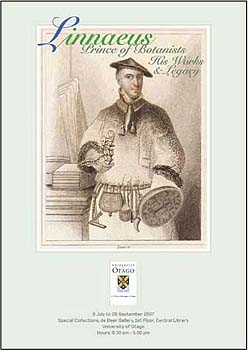
Online exhibition
'The true botanist arranges his plants systematically; and he does not enumerate them out of order.' So wrote Linnaeus about the character of the botanist, whom he classified into true authors or learned compilers. Linnaeus's Philosophia Botanica is a compilation of his lectures on botany and was first published in Stockholm in 1751. Linnaeus was flamboyant, boastful, and unorthodox, yet his lectures – delivered with passion and enthusiasm – captured the imagination of his listeners. He gained many disciples, or as he called them: 'Apostles'. Philosophia Botanica also advanced his ideas and development of his binominal nomenclature applied to plants. This is the first full English translation.
Carl Linnaeus, Philosophia Botanica. Translated by Stephen Freer. Oxford: Oxford University Press, 2003. Science QK 91 P513 2003
-
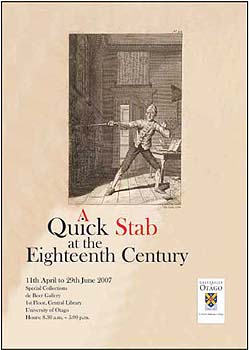
Online exhibition
William Hogarth (1697 - 1764) was the first eighteenth century British artist to gain an international reputation. His fame mainly stemmed from his own engraved reproductions of his satirical and moral paintings, notably the Harlot's Progress (1732), the Rake's Progress (1733 - 35), and Marriage à la Mode (1743 - 5). William Hogarth's The Works of William Hogarth. [1835] featured in the exhibition. There are 116 plates in this volume one of which is 'Taste in High Life'
William Hogarth and dog [photograph], and 'Taste in High Life' [photograph], from William Hogarth, The Works of William Hogarth. London: Printed for Baldwin and Cradock, by G. Woodfall ..., [1835]. DeBeer Ee 1835 H
-
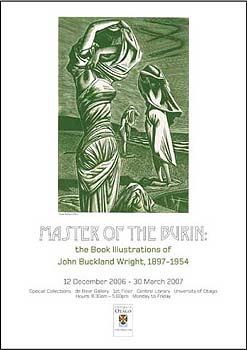
Online exhibition
These four catalogues were compiled for exhibitions organized by the London-based firm of Wolseley Fine Arts. The first three reflect important periods of JBW's life: his European stint in Brussels and Paris; his association with Christopher Sandford and Golden Cockerel Press editions; and his involvement with the Surrealist movement. The fourth - My Own Pleasure - has a more personal focus: engravings and etchings made by the artist for his own pleasure between 1925 and 1954.
John Buckland Wright (1897-1954): The Continental Years: Catalogue of a Touring Exhibition Exploring the Work of Buckland Wright as an Engraver and Illustrator during his Continental Years 1926-39. [1997]. Stk NE 1147.6 B83 C66 | John Buckland Wright (1897-1954): The Surrealist Years, 1934-1954: Paintings, Drawings and Engravings. [1999]. Stk NE 1147.6 B83 S87 | John Buckland Wright (1897-1954): The Golden Cockerel Years: Engravings made for the Golden Cockerel and Other Presses 1936-1954. (2001). Stk NE 1147.6 B83 G64 | John Buckland Wright (1897-1954): For My Own Pleasure, The Autonomous Prints: Engravings and Etchings made for the Artist's Own Pleasure between 1925 and 1954. (2003). Stk NE 1147.6 B83 F67
-
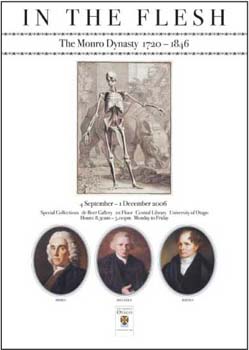
Online exhibition
The Murder Act of 1752 made medical dissection of all executed murderers compulsory. On 28 January 1829, Burke was hanged; thirty shillings being the cost of a good view of the scaffold. Tertius began the dissection and accompanying lecture at 1 o'clock and was (for the day at least) the most popular anatomy lecturer on campus. The scalp was first removed to show the muscles of the upper part of the head; then the skull was cut away to expose the brain. An enormous quantity of blood gushed out, so that by at the end of the lecture at 3 o'clock, the room was like an abattoir with the floor all bloody and trodden upon. Burke's skeleton was carefully preserved, and can still be seen today in the Anatomical Museum in Edinburgh. Hare turned King's Witness and escaped the death penalty.
Hugh Douglas, Burke and Hare. London: Robert Hale, 1973. Medical W 880.R856b
-
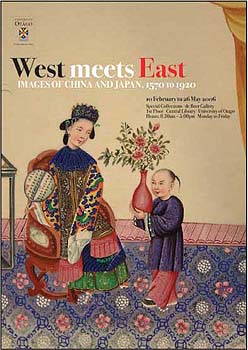
Online exhibition
In 1844, Evariste Régis Huc (1813-1860), a French Lazarist missionary, was ordered to explore the area surrounding the mission at Si-Wang (Hsi-wan-tse), about 200 kilometres to the northwest of Peking (Beijing). He and his companion, Joseph Gabet, disguised themselves by shaving their heads and taking the yellow robes of the Tibetan lamas. From Dolon-nor and Kwei-hwa-ch'eng (Hohhot) they went to Tang-Kiul, then Llhasa, where they were expelled, and on to Ch'eng-tu, where they found a warrant had been issued for their arrest. By junk, down the Kan River, they finally reached Canton. When first published, many thought Huc's Travels was a work of fiction.
M. Huc, Travels in Tartary, Thibet and China during the years 1844-5-6. Vol. II (choose Cabinet 4). Chicago: Open Court Publishing, 1898. Stk DS 709 HV77
-
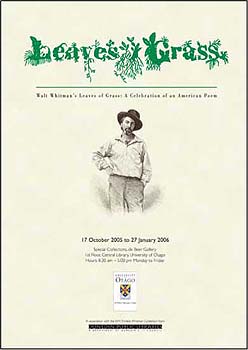
Online exhibition
The first edition of Walt Whitman's Leaves of Grass was published in 1855. While it appeared without Whitman's name on the title page or binding, it did bear his identity in three ways: the book's copyright notice is in his name, he identifies himself in the text as "Walt Whitman, an American, one of the roughs, a kosmos," and an engraving of him by Gabriel Harrison serves as the book's frontispiece. Twelve unrhymed poems and a preface 'written hastily' were contained in the 95 page folio book. Probably 800 copies were printed. This is the Collectors Reprints (1992) facsimile, showing the sprouting and root-bound title and green binding.
Walt Whitman, Leaves of Grass. First edition. Brooklyn, New York, 1855. New York: Collectors Reprints facsimile, 1992. Stk PS3201 1992
-
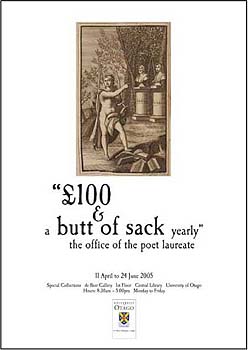
Online exhibition
On 10 October 1972, Sir John Betjeman (he was knighted in 1969) received a telephone call from Buckingham Palace that informed him of his appointment as poet laureate. Besieged by the media, he told them: 'I don't think I am any good and if I thought I was any good I wouldn't be any good. I don't watch much television, except for Coronation Street and Alf Garnett who is outrageous but I am going to watch myself tonight on television.' Betjeman was also a film critic, an editor of the Shell Guides, and an active conservationist. This volume is edited by his daughter, Candida Lycett Green.
John Betjeman Letters. Edited by Candida Lycett Green. London: Methuen, 1994-1995. Central PR 6003 E77 Z5 A4 1994
-
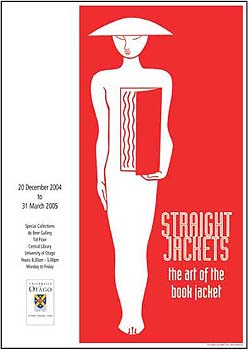
Online exhibition
Authors often like to scribble, doodle or paint. Jean Cocteau produced distinctive images for his books, Evelyn Waugh first entertained the idea of being an artist and illustrated his first book, and T.S. Eliot drew some rather unsophisticated sketches for his Old Possum's Book of Practical Cats. Osbert Lancaster was another who had input into the designs of his book jackets. His witty cover for Facades and Faces is now a classic.
Osbert Lancaster, Façades and Faces. London: John Murray, 1950. Brasch NC 1479 L3 A4 1950 Artist/designer: Osbert Lancaster.
-
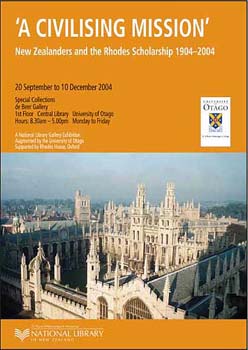
Online exhibition
Proof of the Norman Davis panel added to the collection of panels comprising the exhibition 'A Civilising Mission': New Zealanders and the Rhodes Scholarship 1904-2004.
'Norman Davis' [panel] [proof], 2004.
-
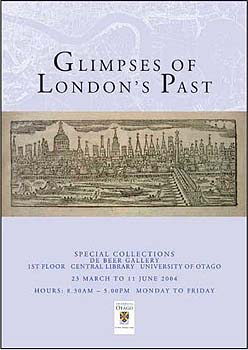
Online exhibition
Samuel Pepys's library of 3,000 volumes arranged by size, from No.1 (smallest) to 3,000 (largest), is at Magdalene College, Cambridge. Pepys was also a collector of ephemera, amassing many scarce posters, broadsheets, pamphlets, and chapbooks. These cards, which depict events of the Glorious Revolution of 1688, form part of his ephemera collection.
Playing Cards (facsimile) from the Library of Samuel Pepys. 1972. Stk GV 1201 CU58
-
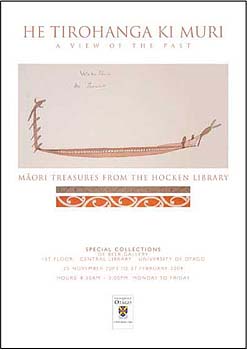
Online exhibition
-
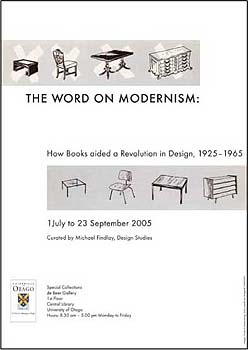
Online exhibition
-
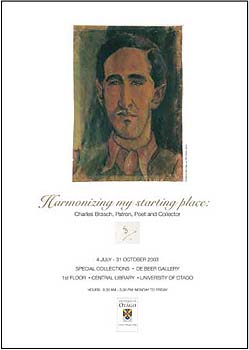
Online exhibition
Sara Fels, Brasch's grandmother, gave him a copy of Selma Lagerlöf's The Wonderful Adventures of Nils. This Swedish classic about the boy who was turned into an elf because of naughtiness and who flew on a big white gander captivated Brasch. It was 'the book I loved above all others.' He also devoured the sequel. This second copy of The Further Adventures was given to Brasch much later by two children and has the accompanying note: 'Dear Charles, Jonathan and I send our love and hope you enjoy this book. This morning we bought some anemone seeds and Jonathan has just finished planting them. We think of you and hope you will get better soon. Love, Katie.' Undoubtedly he was touched by this gift.
Selma Lagerlöf, The further adventures of Nils. London: Dent, 1953. Brasch PT 9767 F8 E5 1953
-
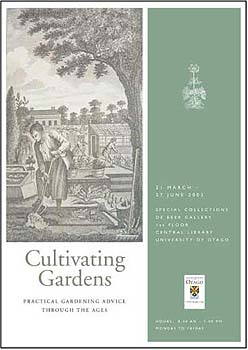
Online exhibition
On his death, one major work by John Evelyn remained unpublished. It was an encyclopaedia prepared during the 1650s which he entitled Elysium Britannicum. Evelyn later extracted and published various sections from it, for example Sylva, and Acetaria, and continued to enlarge the manuscript throughout his life. However he lost confidence in his ability to finish the work, believing that the amount of information it should contain was beyond the ability of one man to assemble. There have been several attempts to bring the work to publication, but the poor condition of the manuscripts, the absence of various sections referred to, and the multiple versions of other sections, made the task very difficult. This modern printing is the first edition of this complex work.
John Evelyn, Elysium Britannicum, or the Royal gardens. Philadelphia: University of Pennsylvania Press, 2001. Stk SB 470 E9 EX6
-
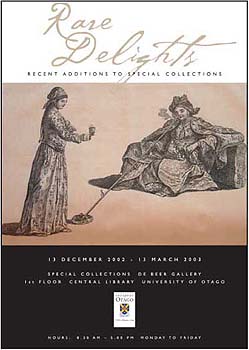
Online exhibition
John Cage (1912-1992) was one of the most important artists of the 20th century. His influence was felt not just in music, as America's leading avant-garde composer, but also in the visual arts, dance and in aesthetic thought in general. Exploring the contents of Rolywholyover is itself an experience fully in keeping with Cage's philosophy. Of its design he said: 'The world is vast; give the impression that the materials are endless…' In the mirror box there are reprints of texts that he found stimulating, writings, letters and illustrations by Cage and others, photographs, musical scores and hints on healthy eating. Loose leafed, they can be read in any order. The publication accompanied a major exhibition at the Museum of Contemporary Art, Los Angeles.
John Cage, Rolywholyover: a circus. New York: Rizzoli, 1993. Stk + ML410 C24 RR27
-
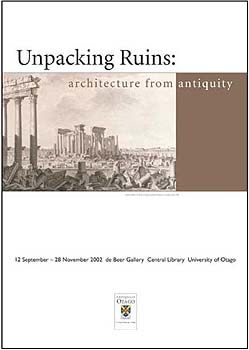
Online exhibition
Throughout the 20th century the fascination with ruins continued. In the latter part of her life Rose Macaulay, (great-niece of Thomas Babington Macaulay), spent four years studying and visiting ruins before writing this work. In it she gives a moving account of how people through the ages have reacted to ruins whether in grief, melancholy, triumph or pleasure.
Dame Rose Macaulay, Pleasure of ruins. London: Weidenfield and Nicolson, 1953. 109 Leith St: Bliss LA/M
Woodward's recent study spans ages and cultures. It relates how ruin and decay feature in the human imagination. The study recalls the disparate works from the likes of Goethe, Byron, Dickens, Macaulay, Lampedusa and Speer.
Christopher Woodward, In ruins. Chatto & Windus, 2001. Central N8237.8.R8 WW51
-
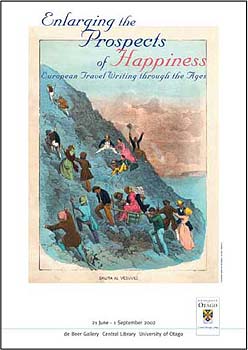
Online exhibition
Charles Wilkes's expedition proved the existence of an Antarctic continent, though he shares the honour with Dumont d'Urville's crew on the Astrolabe. The United States government sponsored the expedition primarily to support the expansion of sealing and whaling interests, but allowed for the possibility that the voyage might 'extend the bounds of science'. During the winter months, the expedition also explored many of the known Pacific islands, improving the charts and collecting specimens of plants, animals and minerals. Few readers have ever read the full account, in five volumes, because Congress only authorised the printing of 100 copies.
Charles Wilkes, Narrative of the United States' Exploring Expedition, during the years 1838, 1839, 1840, 1841, 1842 by Charles Wilkes. Condensed and abridged [ed.] Papakura, N.Z. : R. McMillan, [19--]. Central DU 21 WN7
-
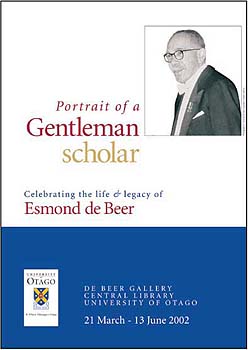
Online exhibition
E. S. De Beer (Ed). The correspondence of John Locke. Oxford [Eng.]: Clarendon Press, 1976-1989. Stk B1296.A15
-
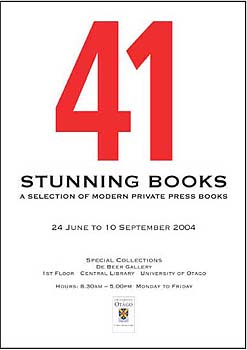
Online exhibition
Robert Coupland Harding, Denis Glover, Leo Bensemann, Ron Holloway, Bob Gormack, Eugene Grayland, Noel Hoggard, Alan Loney, and Tara McLeod are all representatives of New Zealand's fine printing tradition. One other key figure is Bob Lowry, the noted typographer who owned and operated two printing presses: Pelorus and then Pilgrim Press. Of Lowry's How to Ride a Bicycle (1946), Glover wrote: 'Restraint? Lowry has not greatly cared for restraint. If he wishes to out-Herod Herod he will do it with a capital H the size of goal-posts.' (Book 8) Glover continued: 'this book must be Seen to be Believed.' It was printed in 1,000 copies, and is scarce in good condition.
A.R.D. Fairburn, How to Ride a Bicycle in Seventeen Lovely Colours (choose no.4). Auckland: Pelorus Press, 1946. Stk PR 9640 F3 H6
-
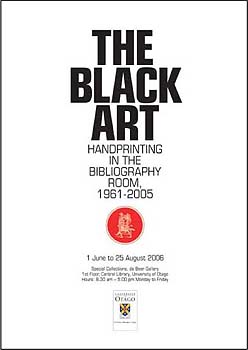
Online exhibition
In 2005, Brendan O'Brien, a Wellington based hand-craft printer, was invited to be the third Printer in Residence. While here two projects emerged: the printing of a tribute volume of verse by the artist Joanna Paul called access to lilac; and a first time printing of Bill Manhire's and Ralph Hotere's PINE sequence. One hundred copies of the former were printed and available for sale; 150 copies of the latter were printed, with 100 only for sale: 26 signed and 74 unsigned copies. Hotere's PINE is the first publication from the new Otakou Press imprint, launched successfully in December 2005.
Joanna Margaret Paul, Access to Lilac. Dunedin: Bibliography Room, 2005. Stk PR9641.P42 A22
